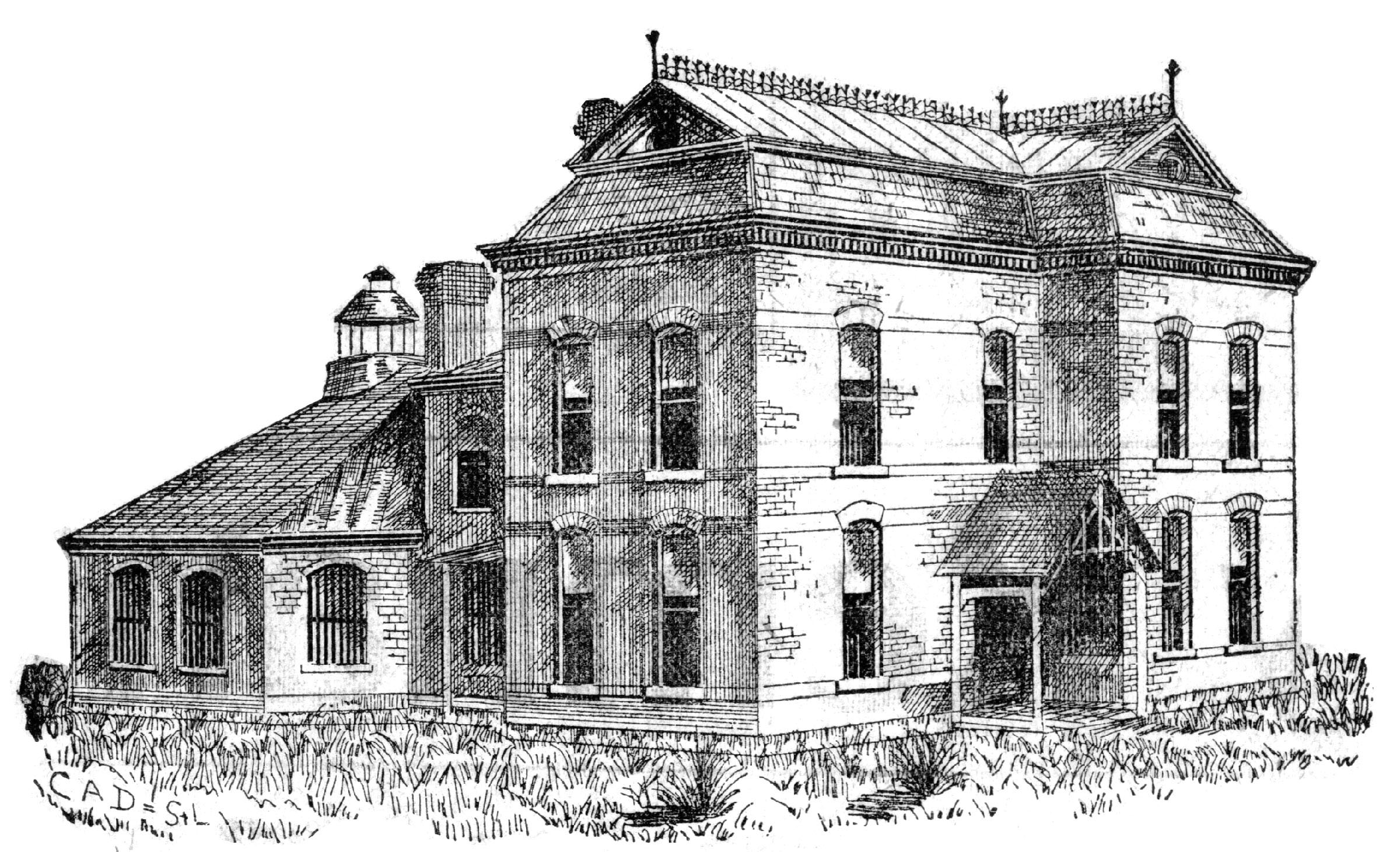The poor condition of the wooden courthouse at Gallatin, MO, prompted officials to move the 1883 trial of outlaw Frank James into rented space in an opera house on the west side of the business square.

The following, published in the Centennial edition of the Gallatin Democrat (page 7), appears under the title, “Citizens Are Ashamed”:
“As early as 1865 we find the local papers complaining of the condition of the courthouse. The old building grew more and more unsatisfactory and in 1883 the Frank James trial was held in a building owned by Judge Alexander on the west side of the public square. On June 12, Mr. Lamkin, of the Gallatin Democrat,” published this statement: ‘It is said that Governors Crittenden and Phelps, General Shelby and other eminent men will be in Gallatin to attend the James trial, and it is enough to make every citizen of Daviess County blush with shame to be compelled to point to do this miserable abode of bats and owls and say to these eminent visitors: This is our court house. After the trial the county court entered into negotiations with Mr. Alexander and the building was arranged to accommodate the circuit court and one or two county offices. The old court house was torn down in 1886, but the side building remained for several more years.”
~~~
Courthouse records dated March 7, 1892, confirm the 2-story brick building on Lot 4 (the 4th lot north of the West Grand and Market street intersection) were being rented for court room and county offices for $650 per year for five years.
~~~
The following, published on the back page of the Jamesport Gazette (Vol. 5, No. 43), was circulated as the Frank James trial was set to begin on the third Monday in December:
“The grand jury condemned the old shell of a court house and also the jail before they adjourned. It is a burning shame that the people of as wealthy a county as this should have such a dilapidated old structure as our present court house and not make an effort to have a better one. Emigrants passing through our county naturally stop at the county seat and they will judge the county by the appearance of the county town. A stranger would naturally conclude from the appearance of our county buildings that Daviess county was a very poor county or that her people were sadly lacking in enterprise. As a matter of dollars and cents our people cannot afford to let our present court house stand much longer. We virtually have no court house, as the old building will not be used for that purpose any longer, and the money paid for rent of another building might be applied in building a new house to better advantage.”

